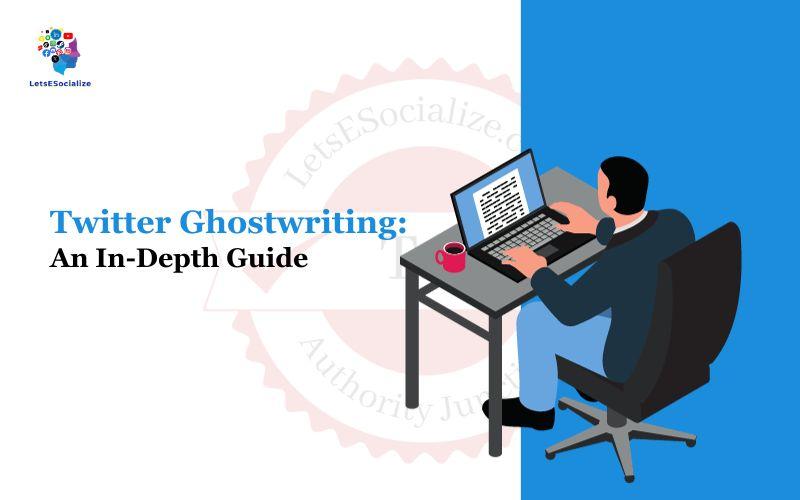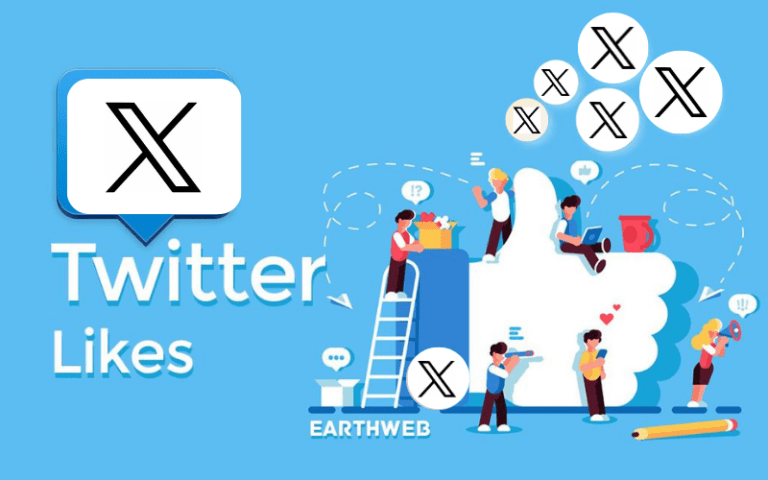Ghostwriting has become increasingly popular on social media platforms like Twitter, with prominent figures and brands often outsourcing tweet content creation.
This comprehensive guide examines what Twitter ghostwriting involves, its pros and cons, key considerations, ethical issues, and best practices.
Table of Contents
What is Twitter Ghostwriting?
Twitter ghostwriting refers to hiring a writer to craft, or “ghostwrite”, content for someone’s Twitter feed on their behalf. The tweets are composed by the ghostwriter but published under the name of the Twitter account owner.
Some key features of Twitter ghostwriting arrangements:
- The ghostwriter is paid to write tweets without being credited.
- The account holder whose name the tweets appear under is called the “author”.
- Agreements are discreet, with ghostwriters bound by contracts of confidentiality.
- Ghostwriters study the author’s brand/voice to mirror their tweet style.
- Created content ranges from one-off viral tweets to entire Twitter strategies.
- Used by celebrities, public figures, businesses, and influencers to outsource Twitter activity.
Twitter ghostwriting allows influential users to delegate their tweet writing to dedicated wordsmiths operating behind the scenes.
The Rising Popularity of Twitter Ghostwriting
More public personalities are embracing Twitter ghostwriting services:
- Efficient content production – Ghostwriters research, write, and optimize tweets without client effort.
- Brand consistency – Ghostwriters quickly learn and mimic the client’s tweeting tone and style.
- Specialized skills – Ghostwriters are often experts in areas the client lacks, like comedy writing.
- Viral potential – Skilled ghostwriters know how to craft tweets that grab attention.
- Authenticity – Many ghostwritten tweets feel more authentic than brand tweets written by a social media team.
- Low risk – Controversial tweets get blamed on the ghostwriter, not the client.
- Deniability – Celebrities can deny ghostwriting involvement if exposed.
For these reasons, ghostwriting is a smart way for prominent Twitter users to maintain high-quality, brand-consistent feeds with minimal time and risk.
Also read: The Ultimate Guide to Mastering Twitter in 2023
Ethics of Twitter Ghostwriting
While accepted by many, Twitter ghostwriting remains controversial regarding ethics:
Arguments Against:
- Lack of transparency – Readers need to be more informed on tweet authorship.
- Inauthenticity – Ghostwritten tweets reflect the ghostwriter, not the named account holder.
- Deceptive marketing – Brands denying ghostwriting misrepresent their social media practices.
- Unfair advantage – Ghostwriting provides a competitive edge over genuine user-written tweets.
Arguments For:
- Common practice in other mediums – Books, speeches and columns also involve uncredited writers.
- Collaboration is creative – Account holders still guide overall direction.
- Reader focus is content – Attribution matters less than tweet quality and relevance.
- Authenticity is subjective – Skilled ghostwriters discover and channel the author’s authentic voice.
There are merits to both ethical stances regarding the transparency of ghostwriting on Twitter. It remains an issue of ongoing debate.
How Twitter Ghostwriting Works
If you’re considering hiring or becoming a Twitter ghostwriter, here is how typical arrangements work:
- The client seeks ghostwriters directly or via talent platforms like Fiverr.
- Agreement is negotiated covering services, deadlines, compensation, and non-disclosure.
- The ghostwriter studies the client’s Twitter feed tone, messaging, and goals.
- The ghostwriter crafts draft tweets aligned with the client’s brand voice and audience.
- The client reviews draft tweets, requesting edits until satisfied.
- Final approved tweets auto-schedule posted across agreed posting times.
- Ghostwriter remains on retainer for ongoing content needs as required.
- All content produced is owned completely by the client.
- Ghostwriter keeps their involvement permanently confidential.
When done well, the ghostwriting process feels seamless for the Twitter account owner while providing high-value writing support.
Skills of Successful Twitter Ghostwriters
Expert Twitter ghostwriters exhibit these key skills:
- Exceptional writing ability – Can draft sharply-crafted tweets spanning different styles.
- Creative thinking – Generates engaging ideas and viral tweet possibilities.
- Research competence – Capably studies brand background, voice, and goals.
- Mimicry talent – Has the chameleon-like ability to match different author tones.
- Responsiveness – Can deliver quality tweets on short notice.
- Timeliness – Keeps up-to-date with trends to embed in tweets.
- Thick skin – Open to tweets being rewritten or rejected.
- Discretion – Trustworthy and comfortable working anonymously.
- Technical know-how – Proficient in using scheduling/analytics tools.
The best Twitter ghostwriters blend writing excellence, creativity, discretion and a strong work ethic. They make delegating tweet production hassle-free.
Types of Tweets Produced by Ghostwriters
Twitter ghostwriters are skilled in producing diverse content types:
- News commentary – React to current events with the author’s take.
- Industry insights – Share expertise around the client’s field.
- Hashtag themes – Create tweets piggybacking on trending hashtags.
- Viral jokes/memes – Generate tweets with viral potential.
- Behind-the-scenes – Give audiences insider lifestyle glimpses.
- Q&As – Manage engaging Twitter chats.
- Social listening – Reply strategically to mentions and conversations.
- Scheduled promotions – Promote initiatives like book launches.
- Partnerships – Collaborate with aligned brands.
The best ghostwriters offer broad tweet versatility spanning both entertainment and marketing.
Ghostwriting Tweet Styles

Skilled Twitter ghostwriters can emulate these core tweet composition styles:
Short, punchy – Concise zingers packing maximum impact.
Conversational – Casual, approachable tone using everyday language.
Witty – Impressive jokes, wordplay, and humor tailored to the author.
Thoughtful – Longer musings, reflections, and profound ideas befitting the author.
Inspiring – Motivational quotes and aphorisms to uplift audiences.
Visual – Engaging photos, graphics, videos, gifs, and rich media.
Interactive – Polls, emoji Slider games, Q&As, and crowd prompts.
Informative – Educational facts or exclusive reveals suiting the author’s interests.
Timely – Trending hashtags, current events, and cultural moments.
The full range allows ghostwriters to deliver an engaging, on-brand Twitter presence.
Finding Twitter Ghostwriting Gigs
For ghostwriters seeking new clients, the best places to look include:
- Online freelance platforms like Fiverr and Upwork
- Direct applications to celebrities, influencers, and brands you want to work with
- Ghostwriting agencies who need writers for their client projects
- Referrals from existing happy ghostwriting clients
- Job sites for social media managers open to ghostwriting
- Active networking within professional writing communities
- Targeted Twitter pitches identifying accounts that likely use ghostwriters
Persistence, networking, and continual pitching are key. An impressive portfolio of previous ghostwriting work or viral tweets helps attract clients.
Pricing Your Twitter Ghostwriting Services
When establishing rates as a ghostwriter, consider factors like:
- Writing experience level (beginner vs. advanced ghostwriters)
- Client followers/status (influencer vs. everyday accounts)
- Tweet scope (one-off viral tweets vs. ongoing operations)
- Time investment (quick newsjacking vs. long-form profile study)
- Exclusivity agreements (restricting access to other clients)
Typical Twitter ghostwriting rates:
- One-off tweets: $50-$300+
- Monthly packages: $500-$5000 depending on volume
Low overhead lets ghostwriters earn attractive income, especially with recurring clients.
Protecting Yourself Legally as a Ghostwriter
To avoid legal trouble, Twitter ghostwriters should:
- Use ironclad non-disclosure agreements with clients.
- Avoid tweeting anything defamatory, offensive or illegal.
- Clarify the client owns all created content.
- Maintain written approvals for publishing tweet drafts.
- Have clients acknowledge ghostwriting in agreements.
- Refuse requests violating Twitter policies.
- Consult a lawyer when needed on difficult cases.
With the right legal safeguards, ghostwriting liability risk remains low if common sense prevails.
Handling Attribution as a Ghostwriter
By default, ghostwriters avoid any public attribution, but there are scenarios where credit warrants revisiting:
- A long-term writing relationship makes the ghostwriter essentially a collaborator. Some acknowledgment may be appropriate.
- If the client wishes to credit the ghostwriter, respect their preference.
- If legally required – for instance, sponsored tweets may mandate attribution.
- If you contributed significant creative work beyond writing, like illustrations.
- If the client tries passing your work off as theirs after a gig ends unethically.
In tricky cases, make attribution expectations clear in writing at the beginning of an engagement.
Maintaining Writing Quality With an Outsourced Twitter Presence
While cost-effective, ghostwriting does risk declining content quality over time if not managed right:
Prevent Quality Erosion By:
- Periodic check-in calls with the client to realign messaging.
- Consistent feedback loops on draft tweets.
- Avoiding overly formulaic tweets.
- Refreshing offers like viral tweet brainstorms.
- Seeking new inspiration sources to spark ideas.
- Monitoring metrics to spot engagement drops.
- Retiring dated styles and introducing fresh approaches.
- Establishing a maximum tweet reuse policy.
- Making collaboration feel fresh with process innovations.
Proactive ghostwriters focused on providing consistent value are best equipped to maintain high writing standards long-term for their clients’ Twitter presence.
Innovating the Twitter Ghostwriting Process
Leading ghostwriters continually refine their creative process:
- Co-creation sessions – Jointly brainstorming ideas in freeform video calls.
- Style surveys – Have the client complete a detailed tone preference questionnaire.
- Counterfactual tweets – Imagining “What if?” alternative life scenarios for viral threads.
- Satellite channels – Complementing core Twitter feed with experimental side channels.
- Alter egos – Crafting tweets from the perspective of the client’s hypothetical other identities.
- Guest ghosts – Pairing the primary ghostwriter with hack writers for fresh outlooks.
- Secret projects – Developing tweet packs the client privately debuts at surprise times.
Ghostwriters demonstrate their creative, strategic value by innovating beyond basic tweet writing services.
Potential Hazards of Twitter Ghostwriting
While offering benefits, Twitter ghostwriting also poses risks like:
- Ethical issues around lacking transparency, as explored earlier.
- Legal liability if ghostwritten tweets spark controversies.
- Reputational damage if the ghostwriting arrangement is exposed.
- Social media policy violations if proper diligence is not done.
- Inauthentic tone due to the ghostwriter poorly imitating the author.
- Loss of creative control and brand consistency with outsourced writing.
- Privacy leaks by an untrustworthy ghostwriter sharing inside info.
- Over-reliance on automation leads to formulaic content.
- Difficulty tracking real engagement metrics with ghostwritten tweets.
Thoughtful precautionary steps can minimize these hazards for a positive Twitter ghostwriting experience.
Best Practices for Twitter Ghostwriting
These best practices ensure an effective, mutually beneficial Twitter ghostwriting relationship:
For Clients:
- Share plenty of tone reference material like speeches and columns.
- Maintain open communication channels for quick feedback.
- Set clear messaging boundaries the ghostwriter should avoid.
- Occasionally acknowledge the ghostwriter privately for motivation.
For Ghostwriters:
- Take time to deeply study the client’s voice before drafting tweets.
- Seek client input early and often to ensure alignment.
- Maintain organized access to all client-approved tweets for reference.
- Refresh your creative process constantly to avoid stagnation.
With both parties invested in the collaboration, Twitter ghostwriting delivers excellent results.
Tools of the Trade for Twitter Ghostwriters
Key tools for streamlining the ghostwriting workflow:
- Hootsuite – Social media management platform with scheduling and bulk tweet posting.
- Tweetdeck – Twitter’s tool for timeline tracking and tweet queuing.
- Grammarly – Catch typos and grammar errors in draft tweets before sending.
- FollowerWonk – Analyze a client’s existing Twitter followers and engagement analytics.
- Buffer – Schedule and publish queued tweets at optimal times throughout the day.
- Twitter Advanced Search – Uncover relevant conversational threads around a topic.
- Twitter Analytics – Review your client’s Twitter account performance metrics.
- Trendsmap – Identify top trending hashtags and real-time Twitter discussions to tap into.
The right tools help ghostwriters manage multiple client accounts smoothly and streamline their behind-the-scenes tweet operations.
Key Takeaways on Twitter Ghostwriting
Some top lessons for those considering ghostwriting services:
- Vet ghostwriters carefully – excellent writing skills and online brand experience are essential.
- Use NDAs and written agreements to formalize arrangements.
- Ensure the ghostwriter deeply understands your brand voice before tweeting.
- Give clear direction on off-limit topics and messaging boundaries.
- Collaborate often by brainstorming ideas and reviewing draft tweets.
- Monitor tweet metrics to spot engagement drops or signaling writing issues.
- Innovate creative ways to keep your collaboration fresh long-term.
- Weigh ethical factors around ghostwriting transparency on Twitter.
With the right ghostwriting partnership, your Twitter presence can flourish with expanded content scale, viral potential, and brand consistency.
The Future of Twitter Ghostwriting

Looking ahead, ghostwriting on Twitter is likely to:
- Continue growing for influencer marketing deals requiring frequent high-quality tweets.
- Expand beyond individuals to more corporate brands seeking authentic online voices.
- Provide income stability for writers as media freelance work declines.
- Increase usage in developing nations as global social media takes off.
- Generate BACKLASH and scrutiny if unethical practices proliferate.
- Blend with AI tools like generative text that can mimic an author’s style.
The Twitter ghostwriting boom looks set to accelerate. But greater transparency may be demanded by platforms and users alike.
As social media matures, our relationship with concepts of digital authorship continues evolving.
Conclusion
Twitter ghostwriting offers compelling benefits but also raises ethical issues around transparency. Striking the right balance means ensuring alignment on voice, maintaining engagement quality, and innovating creatively within collaborative tweet partnerships between brands and dedicated wordsmiths.
With the right approach, Twitter ghostwriting provides value for all involved – authors, readers, and gifted writing talent operating out of sight.







